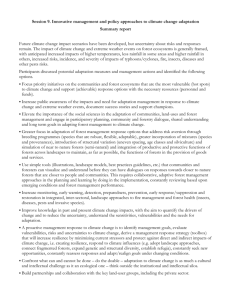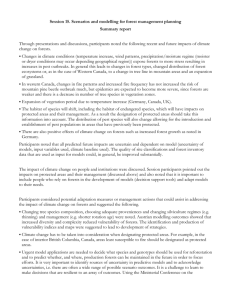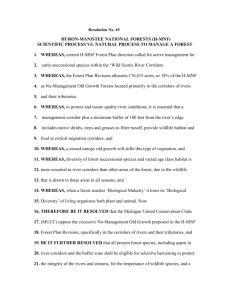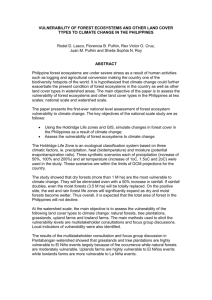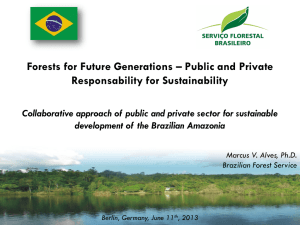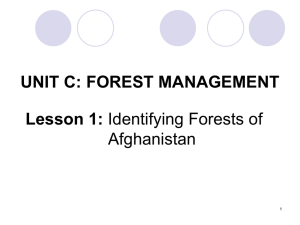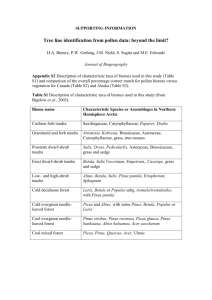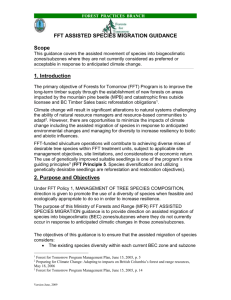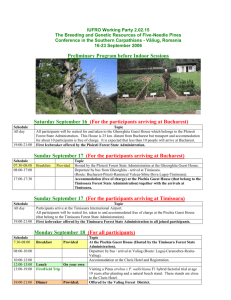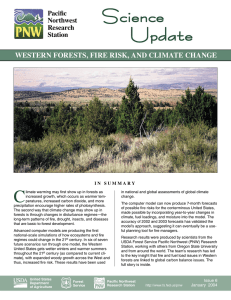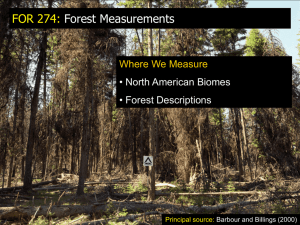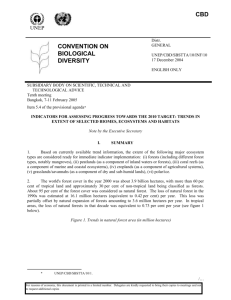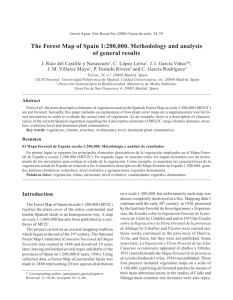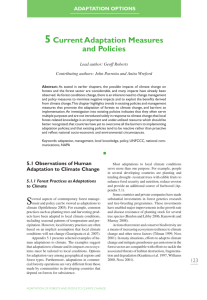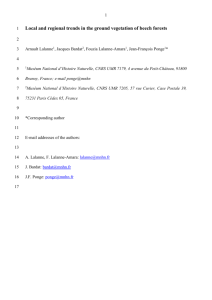MS Word - Food and Agriculture Organization of the United Nations
advertisement
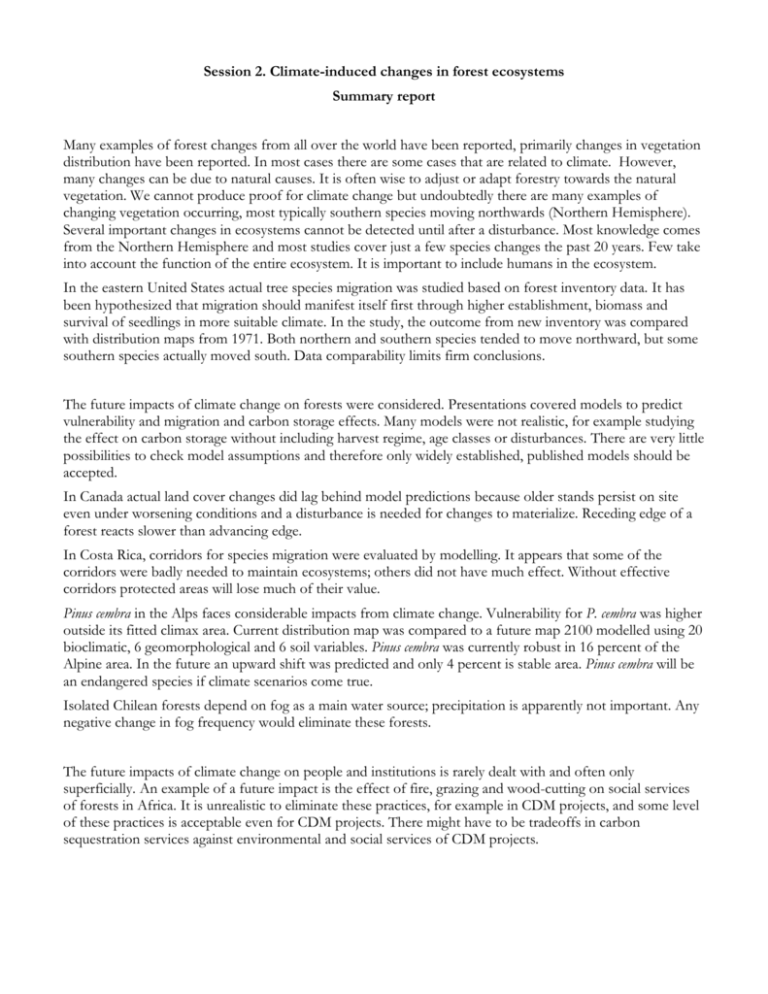
Session 2. Climate-induced changes in forest ecosystems Summary report Many examples of forest changes from all over the world have been reported, primarily changes in vegetation distribution have been reported. In most cases there are some cases that are related to climate. However, many changes can be due to natural causes. It is often wise to adjust or adapt forestry towards the natural vegetation. We cannot produce proof for climate change but undoubtedly there are many examples of changing vegetation occurring, most typically southern species moving northwards (Northern Hemisphere). Several important changes in ecosystems cannot be detected until after a disturbance. Most knowledge comes from the Northern Hemisphere and most studies cover just a few species changes the past 20 years. Few take into account the function of the entire ecosystem. It is important to include humans in the ecosystem. In the eastern United States actual tree species migration was studied based on forest inventory data. It has been hypothesized that migration should manifest itself first through higher establishment, biomass and survival of seedlings in more suitable climate. In the study, the outcome from new inventory was compared with distribution maps from 1971. Both northern and southern species tended to move northward, but some southern species actually moved south. Data comparability limits firm conclusions. The future impacts of climate change on forests were considered. Presentations covered models to predict vulnerability and migration and carbon storage effects. Many models were not realistic, for example studying the effect on carbon storage without including harvest regime, age classes or disturbances. There are very little possibilities to check model assumptions and therefore only widely established, published models should be accepted. In Canada actual land cover changes did lag behind model predictions because older stands persist on site even under worsening conditions and a disturbance is needed for changes to materialize. Receding edge of a forest reacts slower than advancing edge. In Costa Rica, corridors for species migration were evaluated by modelling. It appears that some of the corridors were badly needed to maintain ecosystems; others did not have much effect. Without effective corridors protected areas will lose much of their value. Pinus cembra in the Alps faces considerable impacts from climate change. Vulnerability for P. cembra was higher outside its fitted climax area. Current distribution map was compared to a future map 2100 modelled using 20 bioclimatic, 6 geomorphological and 6 soil variables. Pinus cembra was currently robust in 16 percent of the Alpine area. In the future an upward shift was predicted and only 4 percent is stable area. Pinus cembra will be an endangered species if climate scenarios come true. Isolated Chilean forests depend on fog as a main water source; precipitation is apparently not important. Any negative change in fog frequency would eliminate these forests. The future impacts of climate change on people and institutions is rarely dealt with and often only superficially. An example of a future impact is the effect of fire, grazing and wood-cutting on social services of forests in Africa. It is unrealistic to eliminate these practices, for example in CDM projects, and some level of these practices is acceptable even for CDM projects. There might have to be tradeoffs in carbon sequestration services against environmental and social services of CDM projects. The participants discussed potential adaptation measures and identified the following options. Establishing or improving forest monitoring systems will be essential to detect changes and react with adaptation measures; current trend in reducing on-the ground monitoring should be reversed. Very often, modellers are satisfied by predicting species shift or vulnerability, but do not draw conclusions for adaptation or management and policy change. For example, if Pinus cembra in the Alps will drastically recede, what are the effects on erosion, water, avalanches, carbon storage, wood production, social and economic functions? What should be done to adapt now to anticipated effects? Participants noted the following policy options to most effectively support adaptation of forests and the forest sector to climate change. In order to limit the illegal deforestation, all wood products should be certified. Based on the presentation from Costa Rica, consumers benefiting of water from key ecosystems may pay for its conservation. Forests are not always for timber production. Coordination by ministries in developing countries for negotiations is not effective. Frequently, the negotiators are non-foresters and have not been adequately briefed on the effects of climate change in the forest sector. Improvement would be needed for post Kyoto regime. To enable more sustainable forestry there is a need to create new institutions, especially in developing countries. It was stated that the internal information within nations does not always function. A problem is that foresters (agricultural expertise) have little chance to make their voices heard to those who represent the nation (especially smaller nations) in meetings about international conventions.



